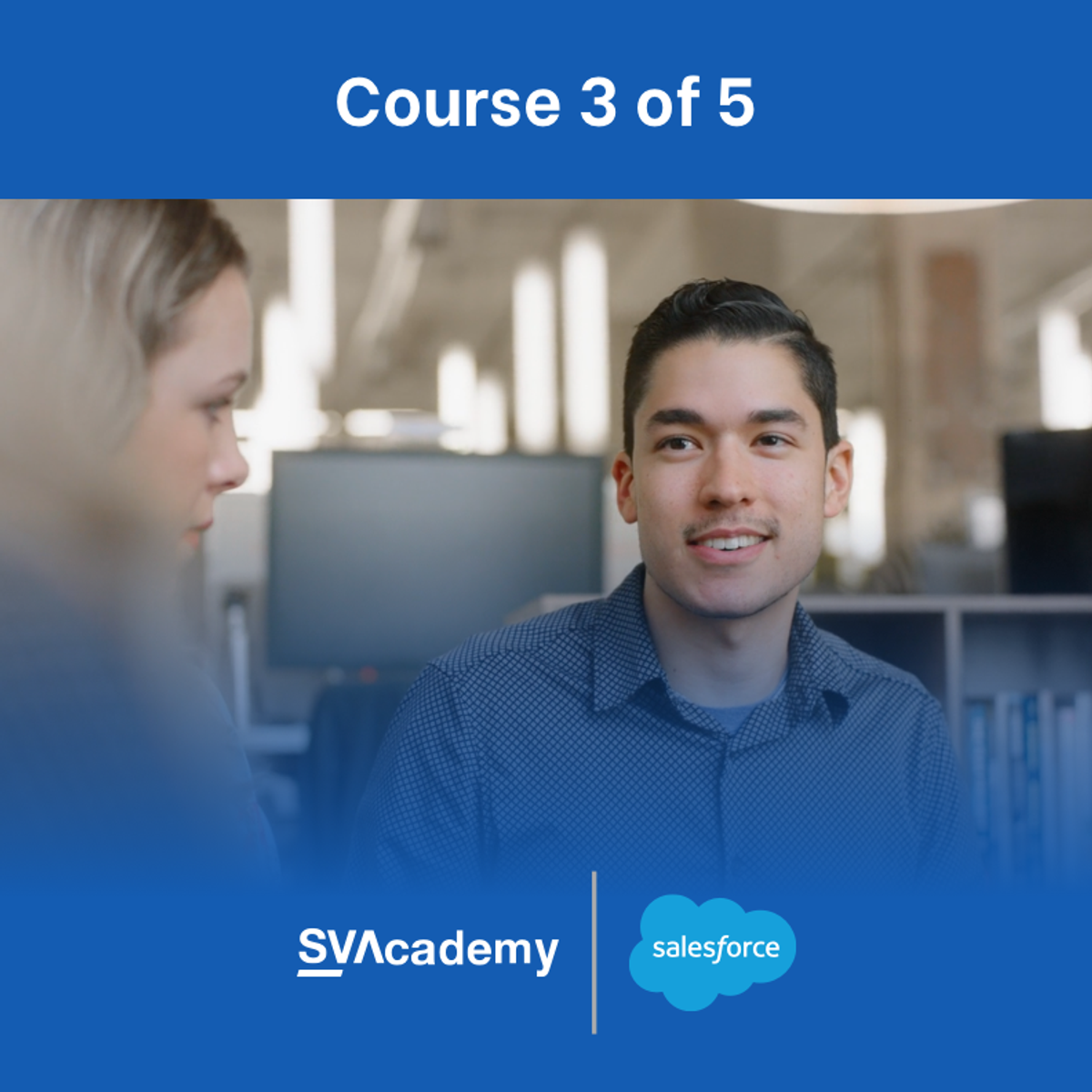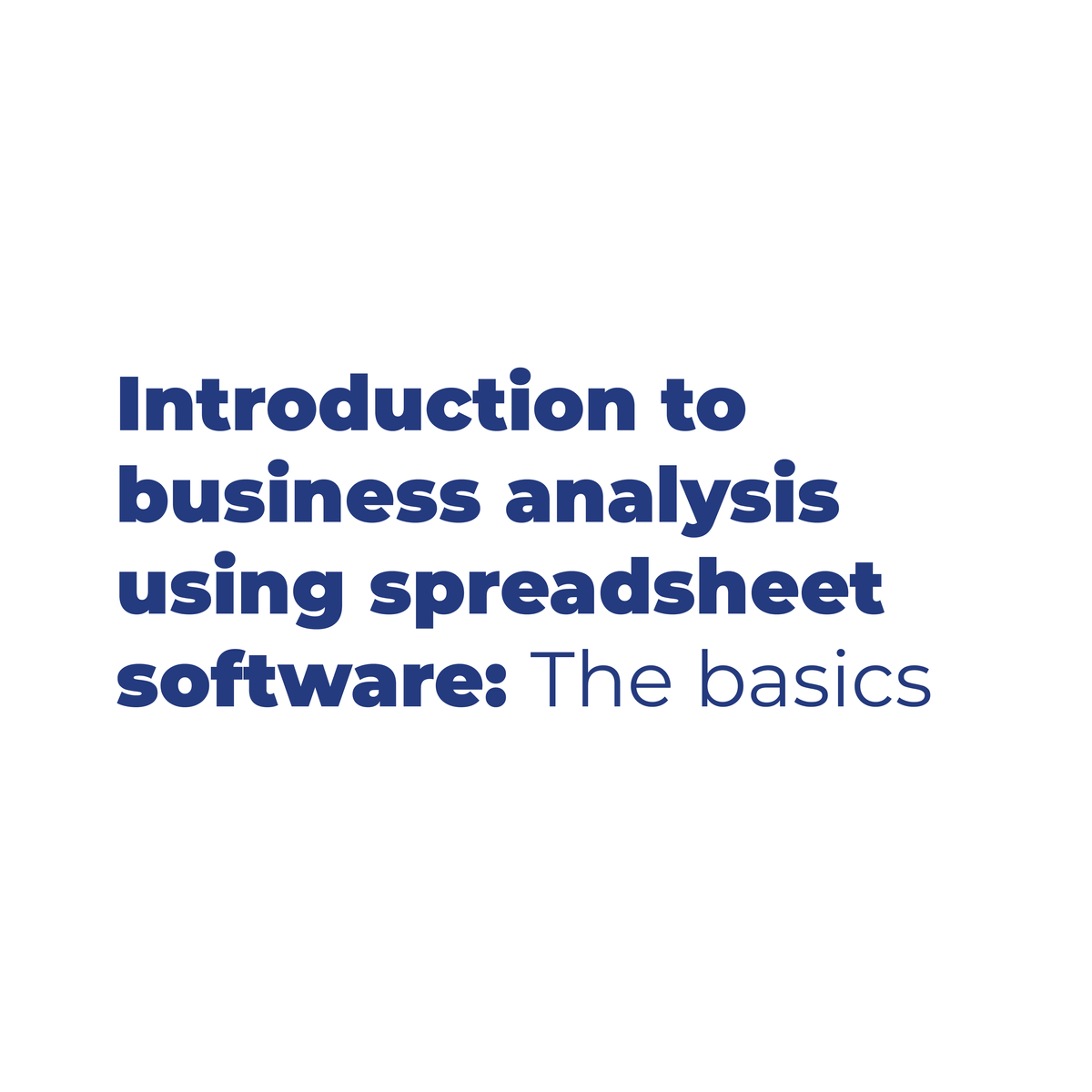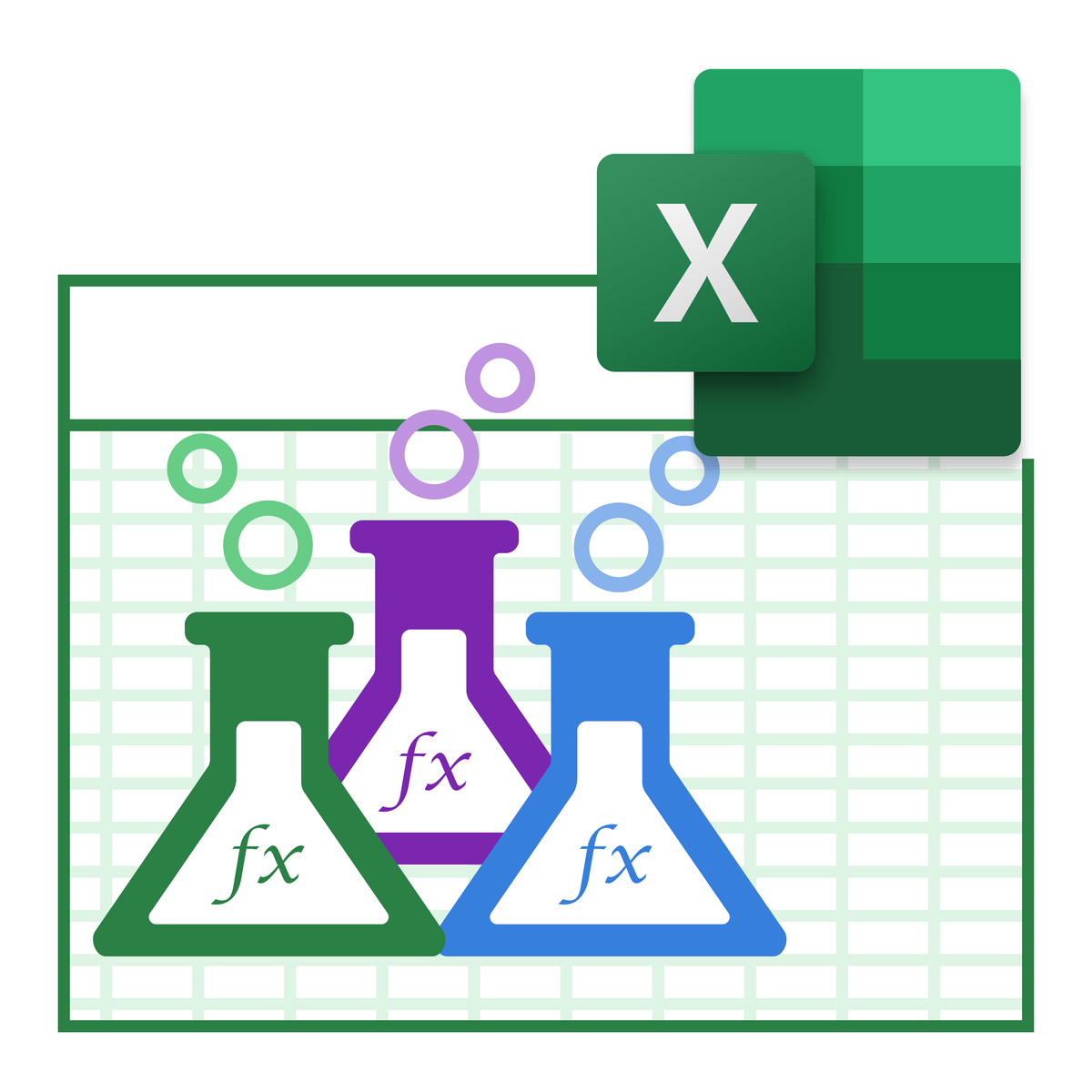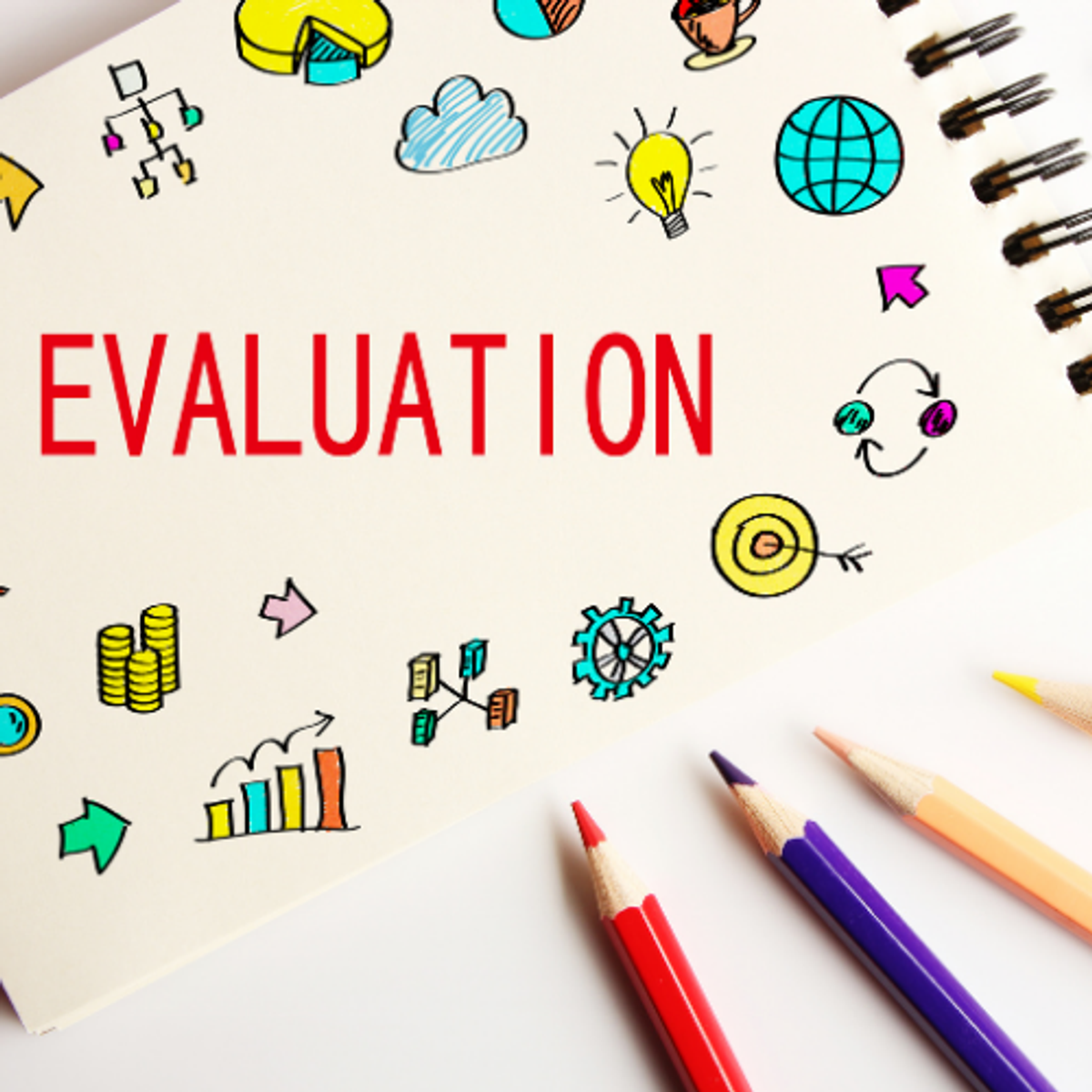Back to Courses









Business Essentials Courses - Page 46
Showing results 451-460 of 645

The Improve Phase for the 6 σ Black Belt
This course is designed for professionals interested in learning the principles of Lean Sigma, the DMAIC process and DFSS. This course is number 6 of 8 in this specialization dealing with topics in the Improve Phase of Six Sigma
Professionals with some completed coursework in statistics and a desire to drive continuous improvement within their organizations would find this course and the others in this specialization appealing.
Method of assessment consists of several formative and summative quizzes and a multi-part peer reviewed project completion regiment.
Lesson | Express Yourself: Pronunciation
This lesson is part of a full course, Speak English Professionally: In Person, Online & On the Phone. Take this lesson to get a short tutorial on the learning objectives covered. To dive deeper into this topic, take the full course.
By the end of this lesson, you will be able to produce proper word stress and intonation in your speaking.

Conversational Selling Playbook for SDRs
This is Course 3 in the Salesforce Sales Development Representative Professional Certificate. In order to successfully complete the course, please ensure you have taken Course 1: Groundwork for Success in Sales Development and Course 2: Foundations for Interviewing with Confidence.
This course will dive into the 8 principles of SV Academy’s Conversational Selling Methodology, which will optimize you for success. You’ll be able to integrate these principles not only in the real world, but in your career. Additionally, you’ll be taught SV Academy’s unique approach to objection handling and framework for high-quality prospecting.
Course 3 in the Sales Development Representative (SDR) Professional Certificate will give you the necessary skills to launch a career in the non-technical side of the tech industry.
By the end of the course, you will be able to:
- Understand the process of asking strategic questions, establishing trust, identifying pain points and proposing value in efforts to closing a sale
- Identify and empathize with your Ideal Customer Profile (ICP) and target persona to build a high-quality lead list, efficiently qualify prospects, and leverage data to drive activity
- Investigate various outreach channels and generate a call script incorporating Conversational Selling strategies
- Develop a foundation for emotional intelligence in a sales context and generate an empathetic email
- Generate a multi-channel sales strategy to outreach prospects via phone, email, video, and social media
To be successful in this course, you should have:
- An ability to communicate in verbal and written form in a way that is accessible and understandable by a general audience (you don’t need to be formal or refined)
- Baseline computer literacy (you must be able to use a word processor, web search, and email)
- Familiarity with social media, including LinkedIn
- Ability and willingness to learn new technology tools
- Motivation to grow personally and professionally
- Hunger for feedback and coaching
- Successfully completed the previous courses in this training

Introduction to Business Analysis Using Spreadsheets: Basics
In this 1-hour 30-mins long project-based course, you will learn the responsibilities of a Business Analyst such as Learn the basic concepts of data analysis and descriptive statistics. Learn how to manipulate, analyze, and visualize data in Google Sheets using functions, aggregation functions, and logical aggregation functions. and present data using different types of charts.
This course works best for learners who wish to learn about Business Analysis and wish to learn about the role of a Business Analyst.
Note: This project works best for learners who are based in the North America region. We’re currently working on providing the same experience in other regions.

Getting Started with Microsoft Word
In this project, you will learn to use the basic features of Microsoft Word. Using the free version of Office 365’s Microsoft Word, you will generate a document that contains formatted text, an image, and a table. MS Word, a powerful word processing application, is used for creating and updating letters, handouts, resumes and many other types of documents for business and personal use. Enhancing your communication skills by mastering basic MS Word increases your marketability in almost any profession.
Federal Taxation I: Individuals, Employees, and Sole Proprietors
This course is the first course in a five-course US Federal Tax Specialization. It covers and focuses on the U.S. federal tax system as it relates to individuals, employees, and sole proprietors. Key concepts covered include gross income and items that are statutorily included or excluded in it, personal and business expenses that qualify as tax deductions, and the differing tax treatments for employees versus self-employed taxpayers. Unlike many other introductory courses in tax and as part of this course’s comprehensive wrap-up, learners will be provided with practical and tangible experience reporting both income and expenses on the main individual tax return used in the US, Form 1040.
If you have enjoyed this course, consider enrolling in our online graduate Accounting program. The University of Illinois at Urbana-Champaign, consistently ranked as one of the nation's top three accounting programs, now offers a master’s in accounting at a very affordable tuition rate and is completely online. The iMSA is a full Master of Accountancy program and students graduate with an MS that is highly recognized. Try an open course or two, then apply for admission into the credit-bearing version as you may be eligible to take credit-bearing courses during the application process. If you are missing any prerequisites for the full degree, you can complete Coursera courses to demonstrate readiness and strengthen your application for the iMSA. For more information on this exciting iMSA online program, refer to this link: https://www.coursera.org/degrees/imsa

Work Smarter with Microsoft Excel
This course is intended for learners with some experience using Microsoft Windows, who are seeking to build presentation skills with Microsoft Excel. To be successful in this course you should have an understanding of the basics of using a Windows-based computer. Experience with printing and using a web browser are an asset, but not required.
Knowing how to use Microsoft Office products is essential in any professional setting. Whether you want to expand your expertise to apply for a new role, start your own business, or simply develop a new personal skill this course is for you.
This course will introduce you to Microsoft’s powerful and easy-to-use spreadsheet program, which provides you with an extensive set of tools to organize, analyze, present, and store data. If you are familiar with Excel’s basic features you can take your skills to the next level. If you are a beginner you will get the opportunity to develop basic Excel skills.
In this course, you will become comfortable with creating a new spreadsheet, working with basic formulas and functions, making your spreadsheets look professional and presentable, and saving and printing a spreadsheet.
By the end of this course, you will be comfortable creating advanced formulas, analyzing data with functions, analyzing data using functions and PivotTables, working with tables, visualizing data with charts, working with graphical objects, and enhancing workbooks.
This course will help you prepare for Exam MO-200: Microsoft Excel (Excel and Excel 2019). You will get opportunities to demonstrate the ability to create and edit a workbook with multiple sheets and use a graphic element to represent data visually. You will also show that you can apply the correct application of the principal features of Excel and complete tasks independently.

How to Create a Program Evaluation for Your Non-Profit
In this 1.5 hour long project-based course, you will learn how to create a program evaluation plan for your non-profit. By the end of the course, you will understand the importance of program evaluation, how to use Logic Models, how to write SMART goals for your program, and how to formulate good questions to gather the data you need.
Learning Objectives:
Task 1: Understand why evaluation is valuable for your program or organization.
Task 2: Learn how to identify and define the typical components of a Logic Model.
Task 3: Write SMART goals for a program outcome.
Task 4: Identify different measurement tools and how they will be helpful in the evaluation process.
Task 5: Understand what makes a good question, identify different types of questions, and practice writing good questions.
Note: This course works best for learners who are based in the North America region. We’re currently working on providing the same experience in other regions.

Introduction to CRM with HubSpot
In this project, we will develop and utilize a CRM in HubSpot and learn how to utilize our CRM to better grow and manage our business. HubSpot is a cloud-based customer relationship management (CRM) platform that can improve all aspects of your business. The HubSpot CRM is a launching pad to all other customer-facing teams as it houses all customer data ranging from contact information to detailed communication logs. HubSpot allows you to incorporate your sales, marketing, and customer service processes into one, all-inclusive platform with their CRM as the foundation. With its user friendly features, HubSpot allows you to easily manage and grow your customers as well as improve your business relationship with existing customers. Best of all, HubSpot’s CRM is completely free!
With “Grow Better” as their mantra, HubSpot has mastered the CRM game. Also, as a platform, HubSpot is able to easily sync and work with other platforms which allows you to incorporate every aspect of your business to better streamline and manage your company. HubSpot is an invaluable tool that is sure to improve your company’s growth, productivity, and brand!
Note: This course works best for learners who are based in the North America region. We’re currently working on providing the same experience in other regions.

Build a Product Roadmap with Aha!
In this 2-hour long project-based course, you will learn what makes a good Product Roadmap, how to use Aha! to combine your product artifacts in a well-structured Product Roadmap, and how to customize Aha! to match the processes and requirements in your team.
Using Aha!, step by step we will start from a blank sheet of paper to get to a comprehensive product definition. We will structure the information in a way that allows to switch between execution level information, like Features and Release and also being able to zoom out to high-level information like Goals and Vision.
Popular Internships and Jobs by Categories
Find Jobs & Internships
Browse
© 2024 BoostGrad | All rights reserved